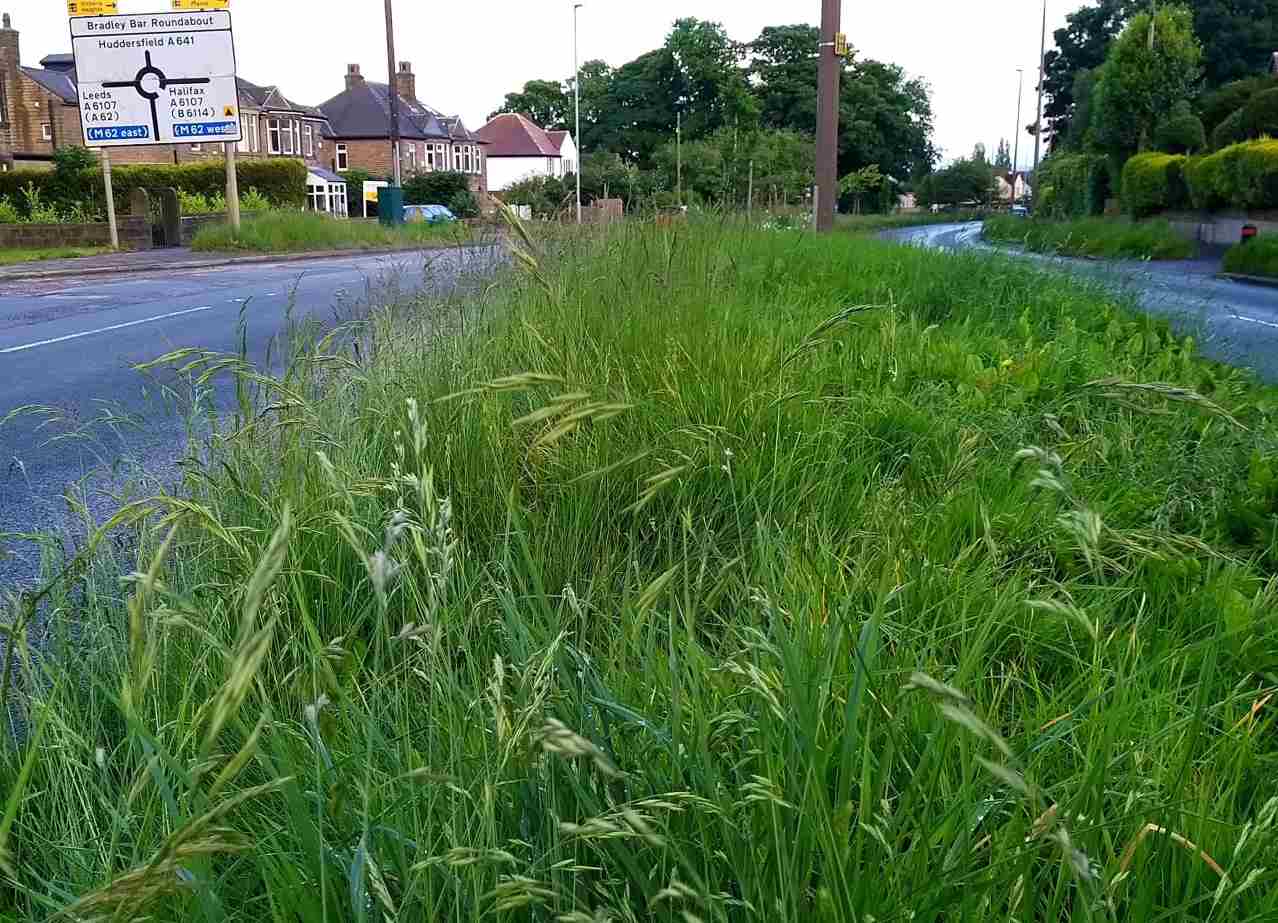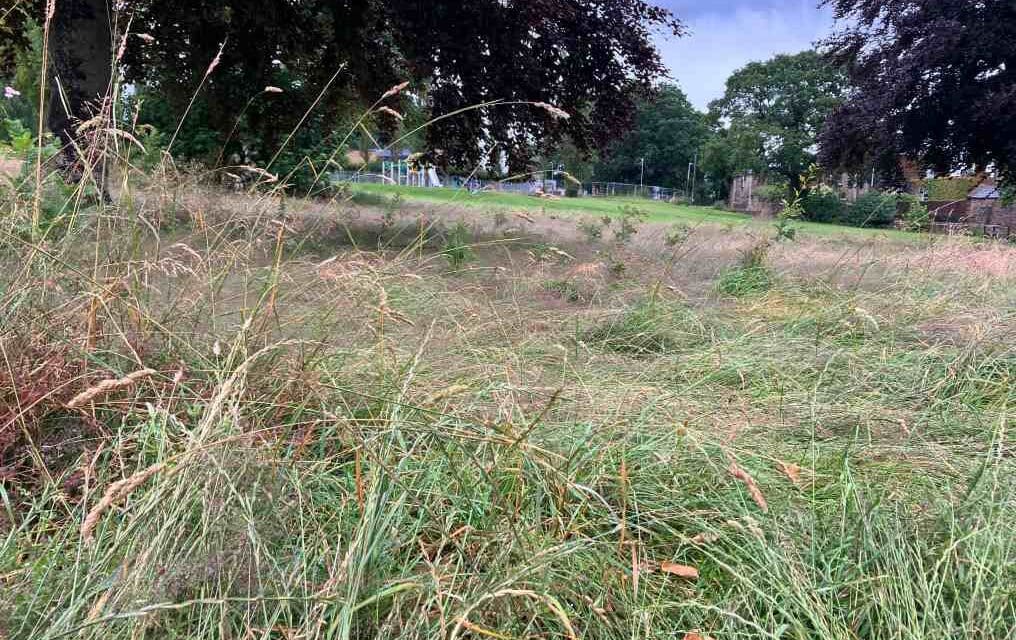Consider how the lilies grow: They do not labour or spin. Yet I tell you, not even Solomon in all his glory was adorned like one of these.
That is how God clothes the grass of the field, which is here today and tomorrow is thrown into the furnace, how much more will He clothe you, O you of little faith!
By Gordon the Gardener
‘Lilies of the Field’ is a biblical quote from Matthew 6:28. It speaks of when Jesus tells the people not to fret over things, put all their worries with him and he will care for them, no matter their economical ranking.
The bible verse says: “So why do you worry about clothing? And consider the lilies of the field.”
Which brings us back to No Mow. Well, it’s August and the verges are mainly still grass. I have been asked: “Why there are no wildflowers?” Well, there are some.
People have heard the slogan ‘No Mow May’ but took it at face value thinking that the simple act of not mowing would produce a wildflower meadow.
The slogan is misleading and has caused much confusion. It implies that if you don’t mow you will get wildflowers. Wrong.
Not mowing may result in an odd wildflower but not many, unless the soil used in the first place was sourced from an area where wildflowers grew.
But most modern grass verges do not come from such areas and are sown down with just grass, which smothers all other growth out to produce… just grass!

So, what can be done to produce wildflowers? Firstly, do not sow simply grass, all you will get is grass!
A proper wildflower mixture of UK native wildflowers and meadow grasses blended and carefully formulated to contain the correct species (native to Britain) and proportions to produce a natural wild look.
It’s important to mow your new perennial or mixed meadow regularly in the first year after sowing, to encourage the perennial flowers and grasses to make strong root growth.
Cut to a height of around 2in (5cm) about six weeks or so after the seedlings appear and every two months throughout the first summer. These cuts can be lower, at 1.5 inch (4cm).
The following year cut to a height of 3in (7.5cm) and do this no later than the end of April.
The main cut should be done around the second week of July. This cut material should be left in place for a few days for the seeds to drop to the ground.
Then it must be raked up and removed, to help reduce the soil’s fertility – and NOT left on the ground thus increasing fertility, a common mistake.
Following these few simple rules and we should soon be looking at highways and byways in their resplendent best and helping to restore natural wildflower habitats for our bees, butterflies, birds and wildlife which we could all be proud of.
Wildflower seed can be sown from now to mid-October including Lily of the Valley, Convallaria Majalis; Cheddar pink – Dianthus Gratianopolitanus; Stinking Hellebore – Helleborus Foetidus; Snake’s Head Fritillary – Fritillaria Meleagris; Pasque flower – Pulsatilla Vulgaris, and many others.
READ MORE: Gordon the Gardener writes every month for Huddersfield Hub. Catch up on his previous blogs HERE
Here’s some jobs for August. Keep the hoe going in the borders and allotment. It is the best – and cheapest – way to a weed-free garden.
Be sure to keep up to keep dead heading plants in your window boxes and hanging baskets to maintain flowering. Keep feeding a general liquid feed also. Dead heading and feeding will bring rich rewards.
Lawns can also be given a dry lawn feed. Just before rain is due is a good time for this. Lettuce when ready can be cut and used, keep well-watered which prevents them bolting. More sowings can also be made.
Carrots need to be watered but give it sparingly little by little and avoid giving a lot of water all in one go which can cause the carrot roots to split.
Sweet peas are in full bloom and need to be picked regularly, kept moist and fed to keep them flowering. Also remove the tendrils at every leaf branch tip which sends the energy to the plant’s flowers.
Now is the time to propagate shrubs with semi-ripe cuttings taken in August and September from new growth that has developed over the spring and summer and just started to harden up (but not yet turned woody).
Shrubs such as Berberis, Camellia, Ceanothus, Erica, Hebe, Viburnum and many other types can be taken from growth 2in to 3in long (5-7cm) and inserted into a mix of 50/50 multi-purpose and horticultural river sand and placed in a cold frame to root.
And now summer has finally arrived enjoy it for as long as it lasts! Don’t we all deserve it?

















